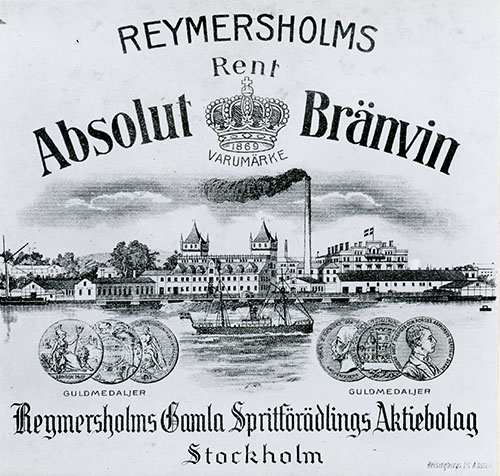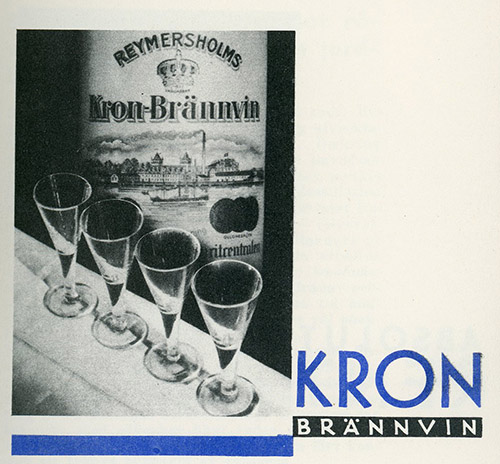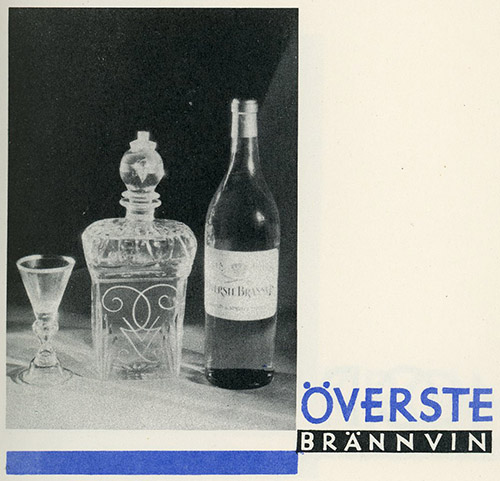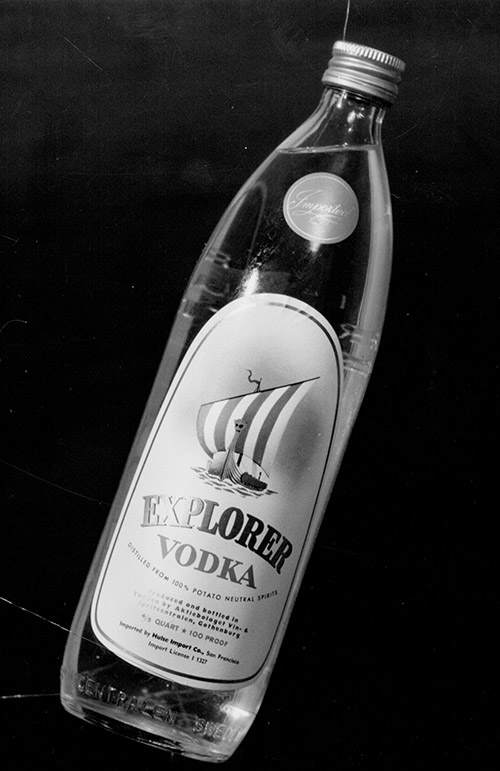
Swedish vodka – a constantly evolving product
Sweden belongs to the so-called vodka belt, both culturally and geographically. Until the middle of the 1990s, hard liquor accounted for more than 50 percent of the total sales of spirits in the country, except for a temporary decline in the 1960s. Product types and varieties are constantly changing, and the development of technology and raw materials lead to new beverage trends.
Vodka production has gone through substantial changes since the 19th century. Traditionally, Swedish spirits were divided into three categories: clear spirits, flavored spirits (including aquavit) and international spirits. Later, vodka was added as a separate category.

In the 19th century, before the industry was centralized, Sweden had many hard liquor producers who offered a wide range of local varieties. L.O. Smith, who was the main liquor manufacturer, left a considerable mark on the Swedish beverage industry. He developed his Absolut Renat Brännvin based on contemporary research, using a distillation method that purified the liquor ten times. Renat Brännvin became the signature product of his company Reymersholmsbolaget.
Vodka made with cellulose
Initially, all Swedish vodka was potato-based. The bottles were easily recognizable thanks to their characteristic white labels. In the wake of the First World War, the Swedish government approved production of sulphite spirits – vodka made with cellulose – for consumption. The reason was that agricultural products were extensively rationed. The bottles that contained sulphite liquor were given blue labels.
In 1920, the Swedish government monopoly Vin & Sprit (Wine & Spirits) started to sell two varieties of sulphite spirits: Okryddat (without spices) table vodka and Renat (pure) table vodka. These two vodkas were complemented by Reimersholm’s Aquavit in 1922 and Gammal Norrland’s Aquavit in 1928.
Renat had 40 percent alcohol by volume. The base spirit had 50 percent alcohol, but was diluted when it was tapped into bottles. A variety known as “kronbrännvin” (“crown vodka”) was stronger and always made with potatoes. Kronbrännvin contained up to 50 percent alcohol and was therefore more expensive. The two types of vodka play a part in the classic Swedish TV series Hedebyborna, based on the novels by Sven Delblanc. In a famous scene, a countryside grocery shop is inspected to make sure it does not sell spirits illegally. When the inspector enters the shop, the shop assistant routinely asks if he would like “Kron” or “Renat”.

”Shield soup” – a weaker vodka
In the middle of the 1950s, “Brännvin Special” was launched. This was a vodka with only 34 percent alcohol. Brännvin Special soon became known as “Shield soup” (”Sköldsoppa” in Swedish). The peculiar name came from Sweden’s finance minister Per Edvin Sköld, who took the initiative to produce a weaker vodka. It also became known as ”the pensioner’s vodka”. Brännvin Special is still available today, but the alcohol content has been further reduced to 30 percent by volume.
Although clear vodka was the most popular type, there was also a tradition of spirits flavored with herbs and extracts. Made from traditional recipes, there were numerous local varieties. Liquor with cumin or dill was known as aquavit, which later became an internationally protected name.
A few classic varieties have survived to this day: O.P. Andersson, produced in Gothenburg from the 1890s, and Östgöta Sädes, which goes back to the sommelier Erik Rehnberg in Söderköping in the 1860s.
New varieties were produced from time to time, but they did not have a great impact on customer demand. The tradition of flavored spirits is kept alive mainly thanks to its popularity during holiday celebrations such as Midsummer and Christmas.

The success of Swedish vodka
In the 1950s, Swedish manufacturers started producing a vodka that had a huge impact on the home market. This paved the way for the tremendous success of Absolut Vodka. Since the glory days of the Swedish drink “punsch” at the end of the 19th century, Swedish liquor had hardly been exported at all. But in the 1950s, the CEO for Vin & Sprit – Johan Ericsson – had an interesting proposal. The previous boxer known as ”Kinna-Ericsson” came up with the idea to export Swedish vodka as ”Viking vodka”. As the name was already taken and protected, the name ”Explorer vodka” was chosen instead. Prince Sigvard Bernadotte designed the bottle with its short neck and a Viking ship on the label.
The idea behind the name Explorer was to create associations with curiosity and a desire to discover the world. At this time, the United States and the Soviet Union challenged each other in the so-called Space Race, for example by launching satellites in space. The first American satellite was called Explorer 1. Despite this, export of the Swedish Explorer vodka didn’t take off. The vodka was however a huge hit in Sweden, and have had a place in the Swedish national psyche ever since it was launched in 1961.

The international breakthrough of Swedish spirits would have to wait until the launch of Absolut vodka in 1979. The product development can be traced back to L.O. Smith’s “absolutely pure vodka” one hundred years earlier. Like most Swedish spirits today, Absolut Vodka is made from grains. Using grains instead of potatoes or cellulose had a major effect on product development.
Pioneers of flavored vodka
As a brand, Absolut is associated with both tradition and innovation. In 1986, Absolut launched the world’s first flavored vodka with a hint of pepper. The idea was to make it easier to mix a Bloody Mary, the 1980s hipster cocktail that is based on a combination of vodka and pepper. Absolut Pepper was shortly followed by Absolut Citron (lemon) and Absolut Kurant (black currant). Over the years, the product range has included numerous other flavors. There have also been limited special editions of Absolut dedicated to different cities.